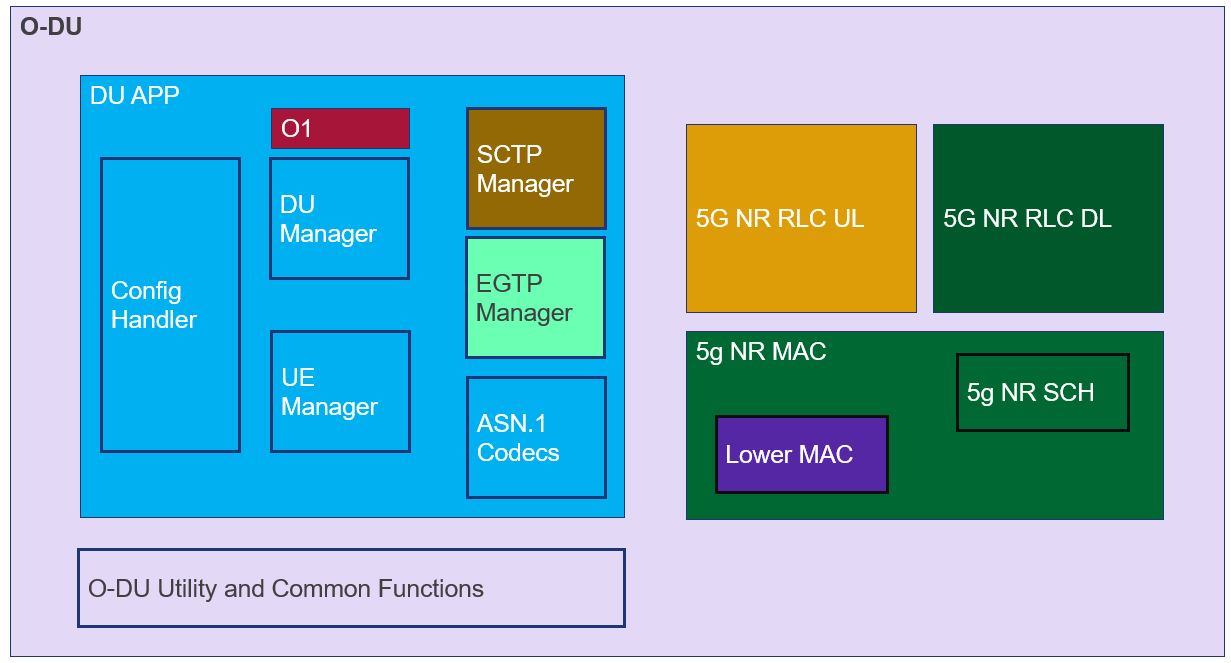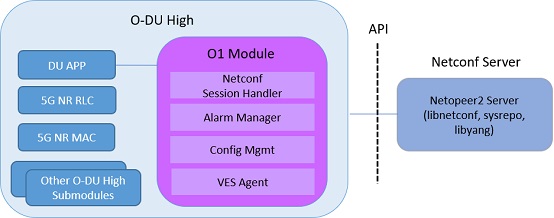O-DU High implements the functional blocks of L2 layers of a 5G NR protocol stack in Stand Alone (SA) mode. The L2 layers are NR RLC (Radio Link Control), NR MAC (Medium Access Control) and NR Scheduler. These layers aid in the transmission of traffic from the UE to the 5G Core network.
5G NR RLC layer provides services for transferring the control and data messages between MAC layer and O-CU (via DU App).
5G NR MAC layer uses the services of the NR physical layer (O-DU Low) to send and receive data on the various logical channels using multiplexing and demultiplexing techniques.
5G NR SCH layer allocates resources in UL and DL for cell and UE based procedures.
O-DU High Architecture
O-DU implements the functional blocks of L2 layer of a 5G NR protocol stack in SA (StandAlone) mode. These layers primarily include NR MAC, NR Scheduler and NR RLC layers.
O-DU modules are developed as shown in the below diagram.
O-DU High Thread Architecture
...
These modules contain platform specific files and support O-DU High functionality and message exchanges.
O1 Module
O1 Architecture
As shown in the figure O1 module runs as a thread in O-DU High. Alarm communication happens over a Unix socket between the O1 and O-DU threads. O1 module uses API calls for interacting with the Netconf server(Netopeer) and datastore(sysrepo) for providing the Netconf interface.
O1 architecture has following components:
Netconf Session Handler: Subscribe to Netconf YANG modules and events. Register callback handler methods.
VES Agent : Sends the VES events to SMO
Alarm Manager: Stores and manages(add/updated/delete) alarms.
Alarm Interface : Provides an interface to O-DU High threads for sending the alarm messages to O1 module over Unix socket.
Config Interface : Interface to handle the configurations sent from SMO to the stack
Netopeer server: Serves the northbound SMO/OAM Netconf requests.
O-DU-High Interfaces
This section describes the other modules that O-DU High interfaces with, as shown in below diagram.
...


